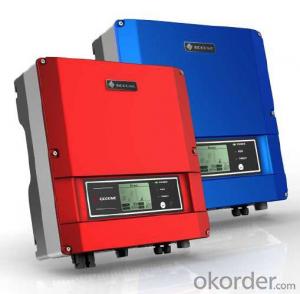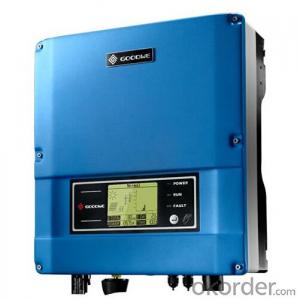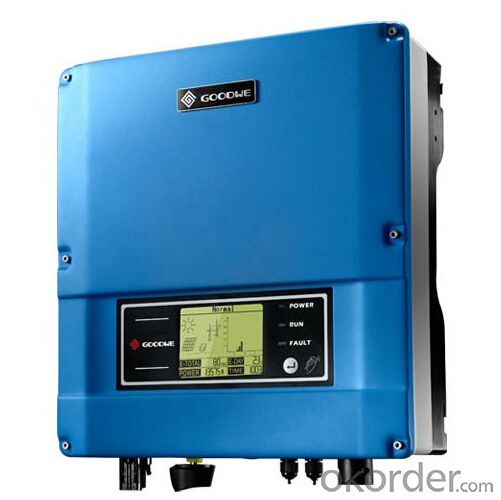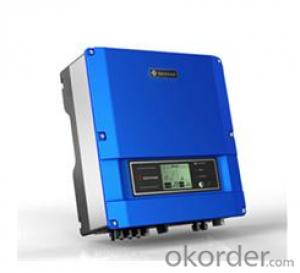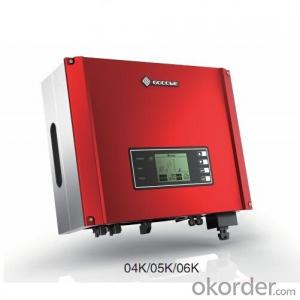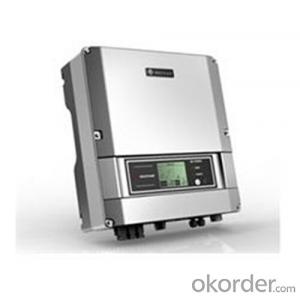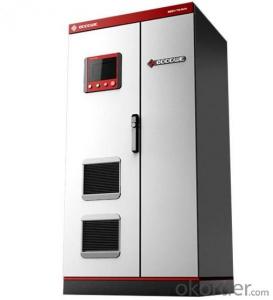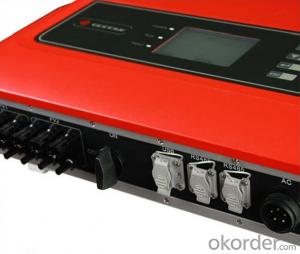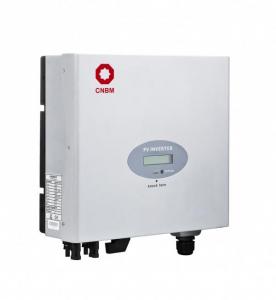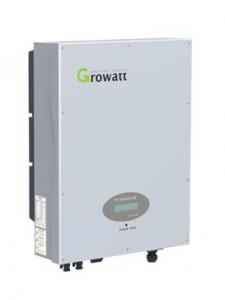Mpp Solar Inverter 12v On Grid Solar Inverter GW4200-DS
OKorder Service Pledge
OKorder Financial Service
You Might Also Like
GW4200-DS
GW4200-DS photovoltaic inverter is suitable for home rooftop photovoltaic system, designed under modern industrial concept.
There are three colors for option with fashionable appearance.
This model uses advanced digital control technology and communication method as well as super MPP tracking and security technology.
It has a wide range of input and output voltage.
To ensure its stability and long service life, our inverter is manufactured with optimum quality components.
It holds a safe lead among the same level of products.
Datasheet
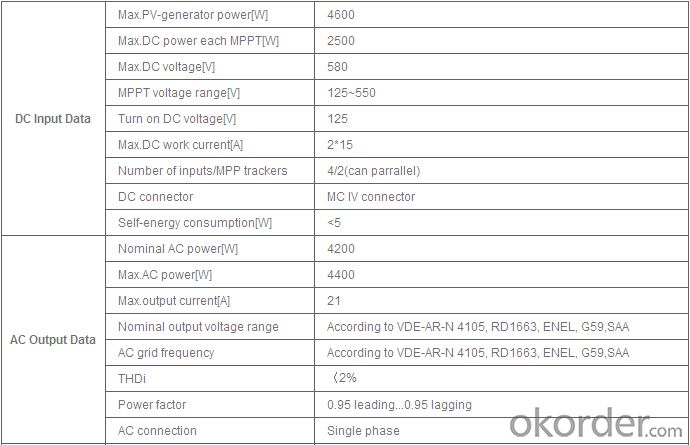
- Q: What are the indicators of a faulty solar inverter?
- Some indicators of a faulty solar inverter include a complete loss of power generation, inconsistent or fluctuating power output, unusual noises or smells coming from the inverter, error messages or warning lights on the display panel, and physical damage or overheating of the inverter unit.
- Q: What is the role of a display interface in a solar inverter?
- The role of a display interface in a solar inverter is to provide real-time information and control options to the user. It allows them to monitor the performance of the solar inverter, such as power output, energy production, and system status. The display interface also provides access to various settings and configuration options, allowing the user to optimize the performance of the solar inverter based on their specific requirements.
- Q: What is the maximum current output of a solar inverter?
- The maximum current output of a solar inverter depends on various factors such as its power rating, design, and specifications. Typically, solar inverters have a maximum current output ranging from a few amperes to several hundred amperes, depending on the specific model and capacity.
- Q: Can a solar inverter be used in a mobile or portable solar system?
- Yes, a solar inverter can be used in a mobile or portable solar system. In fact, it is a crucial component that converts the direct current (DC) generated by the solar panels into alternating current (AC) that can be used to power various devices and appliances. Portable solar systems often include a built-in inverter, allowing them to provide convenient and clean energy on the go.
- Q: How do you calculate the maximum power point tracking range for a solar inverter?
- To calculate the maximum power point tracking (MPPT) range for a solar inverter, you need to consider the solar panel's voltage and current characteristics. The MPPT range is determined by finding the maximum power output from the solar panel, which occurs at the point where the voltage and current are optimized. This is typically done by using a control algorithm that adjusts the inverter's operating point to track the maximum power point. The range will depend on various factors such as the solar panel's temperature, irradiance, and electrical characteristics.
- Q: What are the key factors affecting the installation process of a solar inverter?
- There are several key factors that can affect the installation process of a solar inverter. Some of these factors include the location and orientation of the solar panels, the distance between the panels and the inverter, the type and capacity of the inverter, the wiring and electrical connections, and the availability of appropriate mounting structures. Additionally, factors such as local regulations, building codes, and safety considerations also play a crucial role in the installation process of a solar inverter.
- Q: What are the potential risks of overcharging a battery connected to a solar inverter?
- Overcharging a battery connected to a solar inverter can lead to several potential risks. Firstly, it can cause excessive heat buildup in the battery, which can lead to reduced battery life and even damage the internal components. Secondly, overcharging can cause electrolyte leakage or gas buildup within the battery, increasing the risk of explosion or fire hazard. Additionally, overcharging can result in the release of toxic gases, such as hydrogen, which can be harmful if not properly ventilated. Finally, overcharging can also have an adverse effect on the overall efficiency of the solar system, as excess energy is wasted during the charging process.
- Q: Can a solar inverter be used with different types of power conditioning units?
- Yes, a solar inverter can be used with different types of power conditioning units as long as they are compatible and properly integrated into the solar power system. The inverter's specifications and features should be considered to ensure compatibility with the specific power conditioning unit being used.
- Q: Can a solar inverter be used with a solar carport?
- Yes, a solar inverter can be used with a solar carport. A solar inverter is a device that converts the direct current (DC) electricity generated by solar panels into alternating current (AC) electricity that can be used to power various electrical devices. In the case of a solar carport, the solar panels installed on the carport structure can generate DC electricity, which can then be converted into AC electricity by the inverter to power electric vehicles or to be fed back into the grid.
- Q: What is the role of a remote monitoring system in a solar inverter?
- The role of a remote monitoring system in a solar inverter is to allow for real-time monitoring and management of the solar power generation and inverter performance from a remote location. It provides valuable insights into the system's efficiency, troubleshooting capabilities, and helps ensure optimal performance and timely maintenance. Additionally, a remote monitoring system allows for data analysis, performance tracking, and can facilitate predictive maintenance to maximize the overall efficiency and longevity of the solar inverter system.
Send your message to us
Mpp Solar Inverter 12v On Grid Solar Inverter GW4200-DS
OKorder Service Pledge
OKorder Financial Service
Similar products
Hot products
Hot Searches
Related keywords

